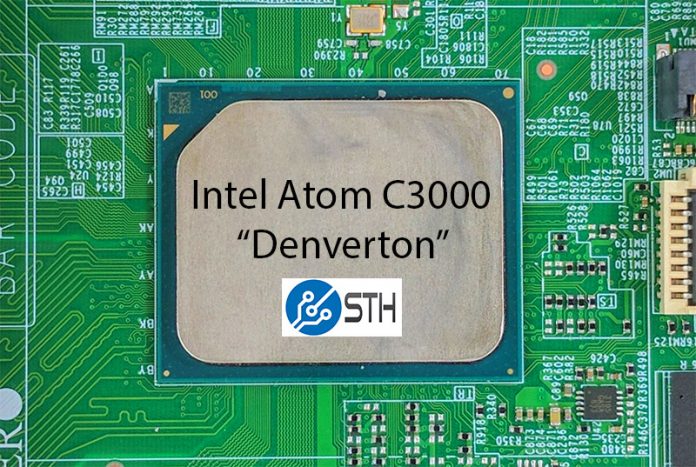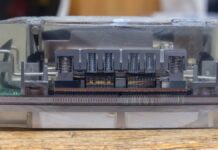Lest you think that the Big 2nd Gen Intel Xeon Scalable Refresh was the only 2020 refresh for Intel, we have new Intel Atom C3000 SKUs. Quietly launched this quarter, the quartet of new processors are out adding the “R” and “L” suffixes. This further expands the Atom C3000 line as it enters its third year of service.
New Intel Atom C3000 (R/L) SKUs
Here is the complete table of Intel Atom C3000 SKUs including the new C3000R and L SKUs:

Here is a quick recap of the highlights from the above chart compared to the one we presented at the “Denverton” launch piece Intel Atom C3000 Series Launch SKUs and Differentiation:
- The Intel Atom C3338R adds 300MHz to the base clock and QAT support for a $1 premium and a 2W TDP premium over the Intel Atom C3338.
- We see the Intel Atom C3436L as a 10.75W TDP quad core part. This part lowers the entry TDP of quad core Atom C3000 by 0.75W TDP below the Atom C3508. It also loses 300MHz and $22 list price in the process.
- The Intel Atom C3558 has been popular at STH and the Atom C3558R adds 200MHz to the base clock along with DDR4-2400 support for a $9 list price and 1W TDP premium.
- The Intel Atom C3758R adds 200MHz for $16 and a 1W TDP increase over the Intel Atom C3758.
The Atom C3758R and C3558R have 20 HSIO lanes while the two lower-end parts are 10 HSIO lane parts. QAT support varies wildly in the Atom C3000 line in terms of speed and features. Intel’s public documentation does not clearly define this.
One may notice there is one more addition from our launch SKU list. The Intel Atom C3336 was launched in 2018 so we updated our chart to include this here.
Final Words
The key theme with the new parts seems to be universal QAT support. Intel is keeping pricing in the $16-26 range with these new parts so it is not using the new SKUs to either significantly raise or lower pricing. The Atom C3000 series has been popular and is designed for extended lifecycles. As a result, seeing new SKUs makes sense even more than three years after we saw the series launch with the Atom C3338 around CES 2017.
We have already covered Intel’s next evolution in this space jumping from 10GbE networking and QAT acceleration up to 100GbE networking and acceleration in the Intel Atom P5900 Series that are designed for next-gen 5G networks. Given how big the embedded edge market is becoming, seeing a refresh in the Atom C3000 series to combat new Arm entrants with makes a lot of competitive sense for Intel. It also means we now have some very finely differentiated SKUs in the line. This is a different approach than we have seen some manufacturers such as AMD on the embedded EPYC 3000 SKU line allowing end customer differentiation using configurable TDPs.
Intel does not push information about the Atom C3000 series even to STH despite the fact we have been covering the segment for a decade. We apologize if this information is a bit behind but it is hard to stay atop of. We only saw this due to an upcoming review we are working on.





We tried to get confirmation that these SKUs have in-silicon fixes for Meldown/Spectre but Intel (through high volume channel partner) did not want to disclose this. As a result we are now looking at adding either ARM or AMD 3000 series chips as secondary option in our infrastructure. After first being bitten by the C2000 bug, and later all the firmware updates pushed for Meltdown/Spectre our confidence is at a historical low.
The main pity is that the embedded market moves very slow, and Intel in many cases is the only reliable option from a parts and supply perspective. Perhaps that’s why they’re positioning the C3558R at such a premium despite essentially being the same silicon.
Agree with David. I’ve got a C2000 system that bricked, was replaced, and bricked again–this time out of warranty.
I get that the C3000 series doesn’t have the same bug but I’ll be going a different direction for future low power systems, even if it’s not the best solution for the job.
It’s all well and good that they’re making updates, but I *still* haven’t seen the Xeon D-1600 line available in the retail channel, and that was released almost a year ago?
I think that’s why STH says we need alternatives not just single source designs @wes
So probably good to wait for the next Qnap with this CPU probably.